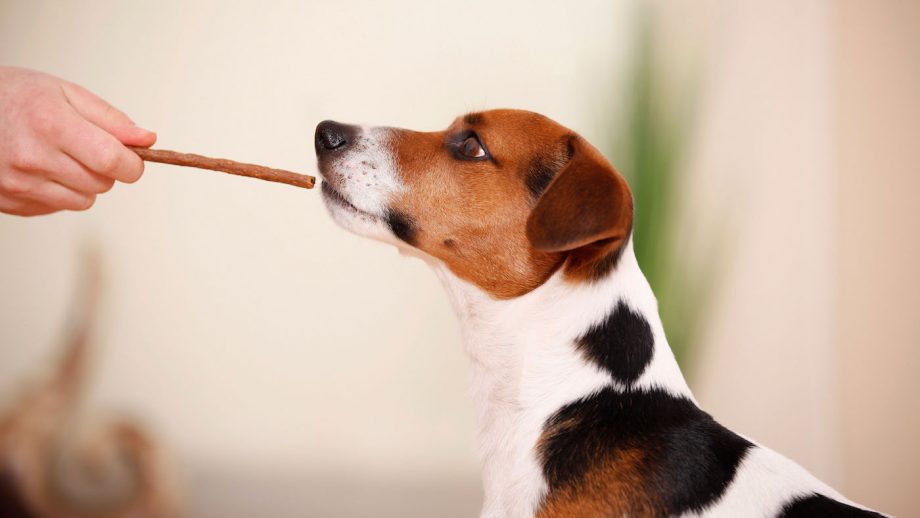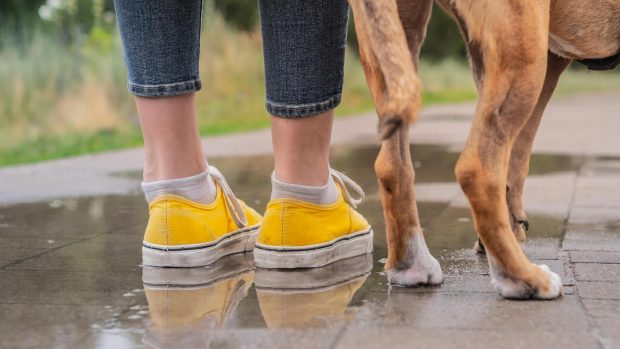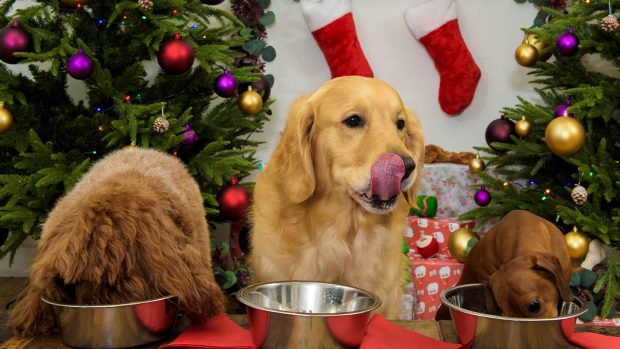If you’ve got a dog who’s underweight, the worry of how to help them gain weight is real. The subject of what to feed your dog is a source of much controversy and fuels many a discussion between dog-walking pals, too. Furthermore, if your pup is struggling to hold his weight, consulting how to fatten a dog up will bring forth myriad and often conflicting responses.
Dogs in the UK generally err on the portly side rather than skinny, with possibly around 50% of pet dogs being overweight. However, if you have ever had a dog that is too thin, you’ll know how difficult it can be to make them gain weight. Some breeds are predisposed to weight gain, while others seem to have a very high metabolism. Some dogs are naturally fussy and turn their nose up even at your home-cooked liver treats. There are plenty of home-made recipes you can cook up, but in my experience you can spend a lot of time and money on expensive ingredients and they make little difference to the dog’s weight. It’s also not advisable to change your dog’s diet too quickly, however desperate you are for him to gain weight.
How to fatten up your dog in 6 steps
1. Consult your vet first of all – and particularly if the dog has lost weight for no reason. Old age, illness and stress may all contribute to weight loss. If you have ruled out any serious underlying condition, there are various steps you can take to help your dog reach a healthy weight.
2. Feed more. It sounds obvious, but the more calories that go in, the more weight the dog is likely to gain. Ask your vet for specific advice, but typically a dog that is underweight can be given 10–20% more than the average recommendations for their size, to allow for their increased energy demands. Feeding little and often is a good way of getting more calories into your dog, rather than over-facing him with two huge meals.
3. Choose a high-calorie food. Pick a variety designed for working or sporting dogs as that will supply extra calories, such as The Hunger of the Wolf High Energy kibble (available on Amazon). There isn’t much around specifically marketed to help dogs put on weight, probably because dogs being overweight is a much more common problem, but we’ve rounded up the best dog foods for weight gain available. You might also find one of the best cold-pressed dog foods is a useful addition to their diet.
Fat contains more calories per gram than protein or carbohydrates, so it’s a good way to increase the calorie count. You can add fat, such as salmon oil to your dog’s food or as treats. Omega 3 fats have other health benefits, such as improving your dog’s skin, coat, eye and brain health. Nut butters are another option, but check that the ingredients are pure, not salted or roasted, and free from other ingredients, particularly xylitol, which is toxic. Peanuts are the safest option, as macadamias, walnuts and pistachios are toxic and should be avoided.

The Hunger Of The Wolf Dry Food | Amazon
This high-energy formula is rich in chicken for active adult dogs of all breeds. It’s packed with protein and healthy fats to keep your dog in tip-top condition.

Peamutt Butter | Amazon
This dog-safe peanut butter is a good source of protein, and contains heart healthy fats, vitamin B, niacin and vitamin E.

Pets Purest Peanut Butter | Amazon
This specially formulated dog-safe peanut butter is free from palm oil, xylitol, salt, added sugar and gluten.
4. Snacking. Boost your dog’s food intake with high-calorie nutritious snacks throughout the day, or for training treats. He may have a good appetite after a walk, so this is often a good time to get some more calories into him. Choose something really appetising like Forthglade’s Natural Dog Treats (with salmon oil and Omega 3), available on Amazon or Skipper’s Fish Skin Flatties (also on Amazon) for a tasty, healthy snack.

Forthglade Joints & Bones Treats | Amazon
These natural, grain-free soft-bite treats contain salmon oil and are gentle on tummies, making for a great addition to your dog’s snack cupboard.

Skipper’s Fish Skin Flatties | Amazon
These gently air-dried fish also help to keep teeth and gums healthy with their abrasive texture.
5. Feed a supplement. Again it’s wisest to consult your vet on this – some people recommend a specific weight-gain booster, such as this weight gain supplement from Buddy & Lola, which is available on Amazon. Others suggest adding vitamin D to help regulate metabolism, or a probiotic for digestive health. Even a spoonful of Manuka honey (find here on Amazon) is tipped in some quarters, as it contains natural antioxidants which can improve the digestion.

Buddy & Lola Weight Gainer | Amazon
This chicken-flavoured powered supplement is formulated with essential nutrients and high calorie proteins to help your dog gain healthy mass and weight.
6. Don’t overdo the exercise. Underweight dogs often have tons of energy, so even if you plan to go for a quiet walk, they’ll embark on zoomies round the field and will have burnt off their breakfast by 9am. You may need to consider keeping your dog on a lead so that he uses up less energy than he is consuming just while you work on his weight gain. Allow your dog to rest, as this will help him to put on weight. You can play with puzzle toys and games at home with him to keep his brain occupied and use up some of that energy without burning so many calories.
How to fatten up your dog and help it gain weight: real-life examples
Case study: high-energy, fussy whippet
H&H deputy art editor Sophie Cheeseman has a whippet (Bluebell) and a lurcher (Frank), and both of them have struggled to maintain their weight.
“Whippets and lurchers must be among the hardest dogs to feed,” says Sophie. “With Bluebell we tried raw, normal, home made – all sorts! The issue we had is a high-energy dog who was also very fussy about food so we needed to find a solution that also minimised waste (raw was awful for this). We have ended up on Skinners Field & Trial (which you can get on Amazon) for both dogs. They get two meals a day of kibble and wet food, which can vary in size depending on how much exercise they’ve done. We do vary the flavours, but try to buy the hypoallergenic/grain-free kibbles as if we don’t they can both get dull coats and dandruff.
“If they are looking particularly scrawny or have a dull coat, or we are away – which causes stress as they’re unsettled – I also supplement with salmon oil and sprats (both of which you can get on Amazon), and more kibble in a snuffle mat or a Kong toy just to keep them being fed little and often.”
Case study 2: high-energy springer spaniel with delicate digestion
You may also enjoy reading…

6 of the best cold-pressed foods for your dog

Nutritious and delicious wet dog food options

Top treats to keep your dog happy, healthy – and hopefully more obedient

Naturally delicious: the best raw food meals to help your dog flourish

Best dog food for sensitive tummies, itchy skin and other allergies

Subscribe to Horse & Hound magazine today – and enjoy unlimited website access all year round
Horse & Hound magazine, out every Thursday, is packed with all the latest news and reports, as well as interviews, specials, nostalgia, vet and training advice. Find how you can enjoy the magazine delivered to your door every week, plus options to upgrade your subscription to access our online service that brings you breaking news and reports as well as other benefits.




